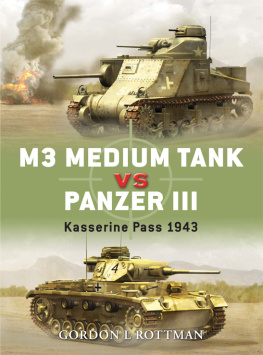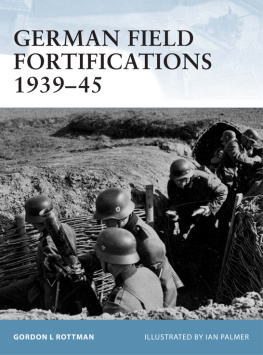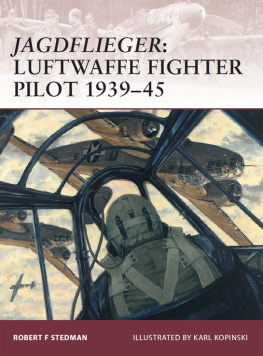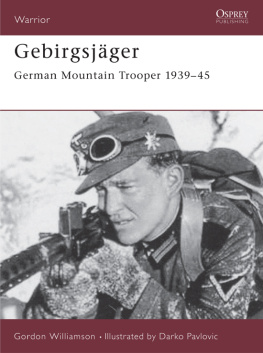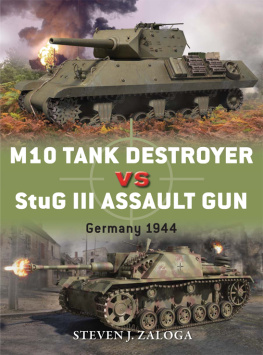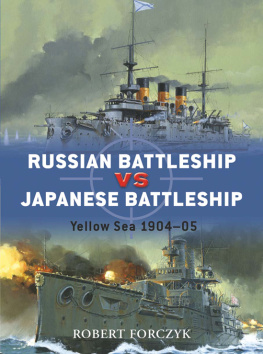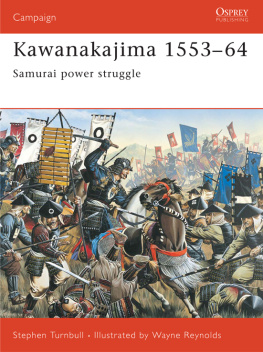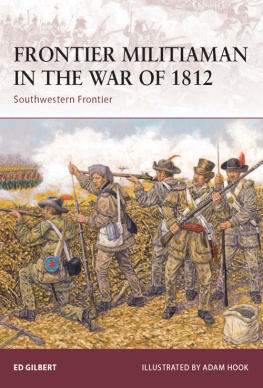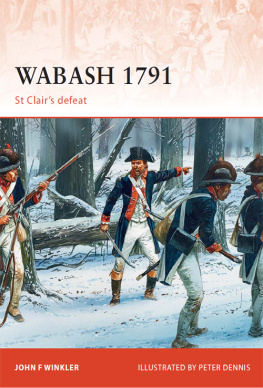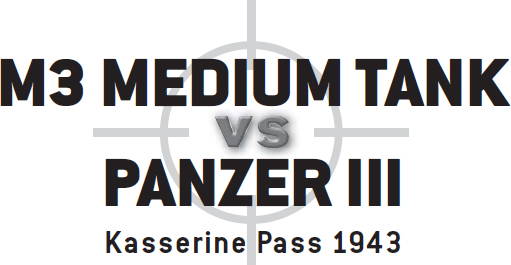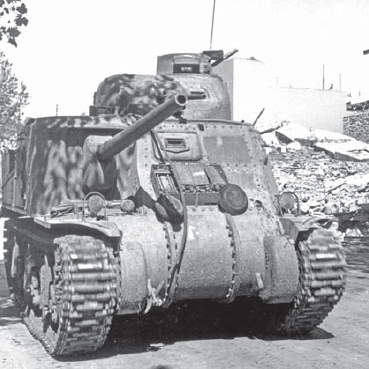GORDON L ROTTMAN
CONTENTS
INTRODUCTION
The 1930s saw a great many advances in tank design by all major countries. Innovations included heavier and improved armor, larger caliber guns with a reduction in machine guns, more powerful engines, higher speeds, longer range, and improved suspension systems that increased a tanks cross-country abilities. Yet there was still much to be learned, and the most valuable lessons had to be learned on the battlefield.
The war had no more than begun when a race evolved between the opposing sides to improve armor and install bigger guns on their tanks. Efforts were made to upgrade existing tanks, and to reduce the time necessary to field better tanks; models were redesigned and upgraded while still more improved models were undergoing design, testing, development, and production.
The US M3 medium tank, called the Lee and Grant by the British, was an example of this. It was based on the earlier M2 and was somewhat of a cobbled together design in order to put a 75mm gun on a tank in quick order. The rushed design suffered from numerous deficiencies, but it fulfilled a dire need, and thus the Grant and Lee saw service in the Western Desert in Africa with the British from May 1942. The M3 spawned the M4 Sherman medium tank, which was to later become the main Allied battle tank. Rife with flaws, the M3 had its strong points as well. Most, in American hands anyway, served on as training tanks by units not yet issued M4s. The M3 chassis also went on to become other vehicles ranging from tank recovery vehicles to self-propelled howitzers.
The Germans most numerous tank was the PzKpfw III, the Panzerkampfwagen (armor battle vehicle), although what the British called the Mk III has since been overshadowed by the better known Tiger and Panther tanks. The Panzer drei (Panzer three), however, was by far the most numerous German light tank in Africa. It is often thought of as a medium tank because the machine gun-armed PzKpfw I and PzKpfw II were usually called light tanks. The 7.5cm short gun-armed PzKpfw IV was the new medium infantry support tank. The PzKpfw III initially had a 3.7cm gun, but a short 5cm was soon introduced followed by a long 5cm, providing an effective antitank gun.
However, there is a lot more to tank warfare than just the tanks. Other critical aspects of tank warfare include tactics and logistics. The United States went to war with an unrealistic and incompletely developed doctrine, using more of a cavalry mindset of charging en masse. The Americans had studied and implemented lessons learned from combat in Europe and North Africa, but there were still many lessons they needed to learn, by performing under the stress and complexities of actual combat, in order to become lethal tankers. Although even in the early stage of the war, American logistics were far superior and richer than those of any other combatant, German veterans certainly had the edge on the Americans in regard to hard-won experience.
It is often said that the February 1943 Kasserine Pass battles were the first engagements between green US troops and German Afrikakorps veterans. It may have been the first significant battle, but the first engagement was on November 2526, 1942, at Chouigui Pass. This small engagement was between 1st Battalion, 1st Armored Regiment equipped with M3 light tanks and a platoon of halftrack-mounted 75mm howitzers (but lacking infantry, artillery, or engineers) and Panzer-Abteilung 190 elements with three or more PzKpfw IIIs with 5cm guns and at least six PzKpfw IVs with long 7.5cm guns. The 75mm howitzers fired first on the German tanks without effect but forced them to withdraw. One American tank company then attacked the German flank and lost six tanks within minutes, but another company maneuvered to attack the German rear, and with their 37mm guns knocked out six PzKpfw IVs and at least one PzKpfw III. These two companies then attacked an Italian infantry unit dismounting from trucks and largely destroyed it. While by no means a decisive engagement, the Americans were recognizing their tactical and equipment inadequacies. However, they did not make adjustments quickly enough. Numerous other engagements were fought with the Germans prior to mid-February 1943, with the M3 mediums seeing action in late November and early December 1942. However, at this stage most of the US losses were due to antitank guns rather than by fire from German tanks.
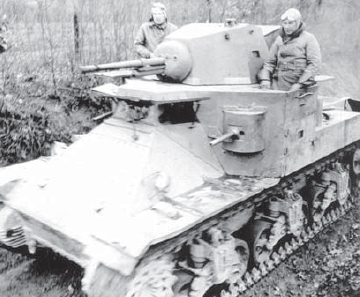
A photograph of an early variation of the M2 tank which was the direct forerunner of the M3. (MHI)
The inexperienced Americans and veteran Germans would face one another in a more desperate battle in the early months of 1943 on the plains and hills of west-central Tunisia. In this ensuing duel both sides would learn much from one another and of themselves.
See Osprey Campaign 152, Kasserine Pass 1943.
CHRONOLOGY
| 1934 |
| January | Requirement for PzKpfw III announced. |
| 1937 |
| May | First production of PzKpfw III. |
| 1940 |
| October | British purchasing commission signs contracts for US M3 light and medium tanks. |
| 1941 |
| March | M3 design completed. |
| April | M3 pilot models built. |
| October | M3 medium reclassified substitute standard when M4 was standardized. |
| 1942 |
| February | M3 light and medium tank delivered to the British. |
| May 26 | Combat debut of M3 mediums |
| June 18 | with UK during the Gazala Line battle. |
| October 23November 5 | Battle of El Alamein, resulting in Rommels retreat toward Tunisia. |
| November 8 | Operation Torch commences with Allied landings in Morocco and Algeria. |
| November 11 | Vichy French forces sign armistice. Eighth Army enters Libya. |
| December 3 | After weeks of advancing into Tunisia and Libya, German counterattacks regain some territory. |
| December 17 | Germans commence withdrawal from Libya. |
| December 22 | British commence attacks near Medjez el Bab. |
| December 24 | Allied attacks in Tunisia are halted. |
| 1943 |
| January 14 | 21. Panzer-Division deployed to halt Allied advance from west. |
| January 15 | British recommence offensive. |
| January 18 | Tiger tanks are committed for the first time. |
| January 23 | Tripoli falls to British. |
| January 25 | US forces secure Maknassy. |
| January 30 | 21. Panzer-Division pushes back US and French units at Fad. |
| February 14 | 10. and 21. Panzer-Divisionen attack II US Corps near Fad, defeating US forces at Sidi Bou Zid. |
| February 15 | German attack reinforced by elements of 15. Panzer-Division. |
| February 17 | German attack continues with two-thirds of 1st US Armored Division destroyed. |

